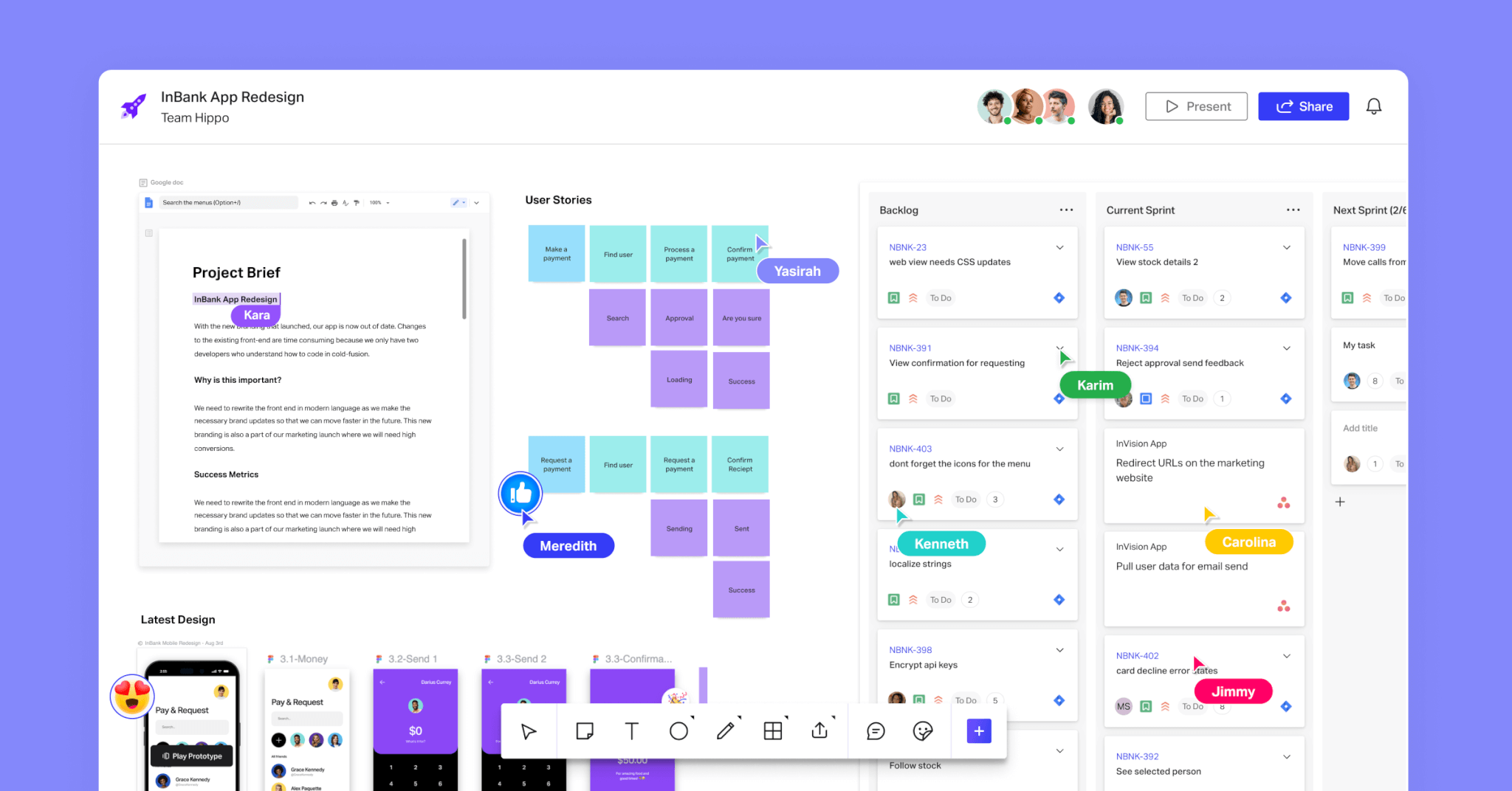
By Kosta Bolgov

Hannah McCabe

Have you ever wrapped up a project with your team and thought, “Well, that could have gone better”?
Maybe it was a lack of communication throughout the project, rigid structures that served as roadblocks, or an influx of feedback at the end of the process that should have been collected while the project was in-flight.
If any of these scenarios feel all too familiar, you need to implement Agile workflows.
But what does an Agile workflow actually look like, and how can you get your team bought-in on the methodology?
In this blog post, we will explore how to implement Agile workflows effectively, empowering teams to thrive in the ever-evolving landscape of modern business.
For modern teams, the ability to adapt quickly and efficiently is crucial for staying ahead of the competition. Agile workflows offer a solution, enabling organizations to embrace change, enhance collaboration, and deliver value to customers consistently.
By implementing Agile workflows on your team, you’re better equipped to place collaboration, adaptability, and customer value at the core of decision making — leading to better team dynamics, better launch processes, and better solutions for your customers.
Whether you’re brand new to the world of Agile, a seasoned pro, or somewhere in between, we’ve put together eight crucial steps you’ll need to effectively implement Agile workflows within your organization.
Before diving into implementation, it’s vital to grasp the core principles that underpin the Agile methodology. The Agile Manifesto emphasizes customer collaboration, responding to change, and prioritizing individuals and interactions over processes and tools. Understanding these principles will serve as a solid foundation for your team as they embrace the Agile mindset.
The success of any Agile workflow depends on the people involved. Form a cross-functional team comprising individuals with diverse skill sets and perspectives. These teams promote collaboration and bring different ideas to the table, allowing for better problem-solving and innovation.
Several Agile frameworks, such as Scrum, Kanban, and Lean, cater to different project types and organizational needs. Evaluate your team’s requirements and choose the most appropriate framework. Scrum, for example, is ideal for projects with a clear scope and fixed timeframes, while Kanban works well for continuous flow projects with changing priorities.
Agile workflows focus on incremental progress and constant improvement. Break down larger projects into smaller, manageable tasks or user stories, then prioritize these tasks based on their value to the end-user and the project’s overall objectives. The team can then create a backlog that outlines all the tasks and prioritizes them accordingly.
If you opt for the Scrum framework, divide your project into time-boxed iterations called sprints. Sprints typically last two to four weeks, during which the team works on completing the selected tasks from the backlog. At the end of each sprint, stakeholders review the deliverables, gather feedback, and plan the next sprint based on the new priorities.
Pro tip: Freehand’s Sprint Planning Template makes scoping, planning, and assigning tasks easier than ever.
Agile workflows encourage continuous improvement through regular retrospectives. After each sprint or at predefined intervals, the team gathers to discuss what went well, what could be improved, and what actions should be taken to enhance their processes. Implementing these insights enables the team to optimize their workflow and achieve higher productivity over time.
Need a retrospective refresher? Freehand’s Retrospectives Template is your one-stop-shop to collect team feedback, reflect on the highs and lows of your last launch, and put together an action plan for improvement moving forward.
Open and transparent communication is the backbone of Agile workflows. Encourage collaboration among team members and stakeholders, fostering an environment where everyone feels comfortable sharing ideas and concerns. Tools like instant messaging, video conferencing, and project management software facilitate real-time collaboration, even in remote or distributed teams.
Freehand’s Feedback Session Template gives everyone a seat at the table, allowing more voices to be heard and enabling teams to gather (and execute on) feedback from more stakeholders than ever before.
Utilize project management tools like Freehand by InVision to monitor the team’s progress, track tasks, and visualize workflow. With our Intelligent Canvas, you can seamlessly pivot from ideation to action and back as projects inevitably hit their twists and turns. Tap into the power of visual collaboration in Freehand to:
And don’t forget: Agile workflows are designed to be adaptable, so don’t be afraid to adjust your approach based on feedback and changing requirements!
To get started with Agile, or improve your current Agile workflows, we’ve built hundreds of templates that empower teams to be more nimble and seamlessly navigate from brainstorm, to ideation, to action – without having to context switch.
From project prioritization to Kanban boards and more, our template gallery is stocked with plug-and-play, fully customizable templates to help your team implement and execute an Agile workflow without starting from scratch for each project.
Implementing Agile workflows is a transformative journey that requires dedication, commitment, and a willingness to embrace change. By understanding Agile principles, forming a cohesive team, selecting the right framework, and prioritizing tasks effectively, organizations can enhance their agility, responsiveness, and overall project success.
Remember, Agile is not a one-size-fits-all solution; it’s a flexible and adaptive approach that can be tailored to suit your team and project’s unique needs. Embrace the iterative nature of Agile workflows and your team will continuously improve, delivering greater value to customers and achieving long-term success in today’s dynamic business landscape.